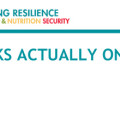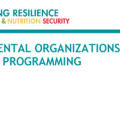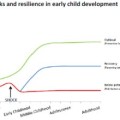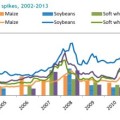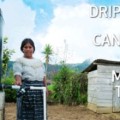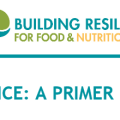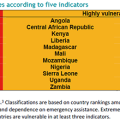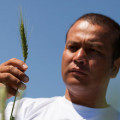From extreme weather events to rising and highly volatile food prices, poor and vulnerable populations are subject to a bevy of shocks that threaten their basic food and nutrition security. In the face of global climate change and other recent food price spikes, it seems to many that such events are occurring more and more >> Read more
Highlights from 2020 Conference Brief 7: Nongovernmental organizations’ approaches to resilience programming
Stories of nongovernmental organizations (NGOs) providing emergency relief in the aftermath of natural disasters and other humanitarian crises are familiar parts of the news. When NGOs such as CARE or Mercy Corps support medical services in South Sudan or bring food to people affected by Typhoon Haiyan in the Philippines, we are not surprised. Less >> Read more
Highlights from Conference Brief 4: Local sources of resilience
Before government programs and international aid efforts, people coped with disasters, famine, conflicts, and other shocks by coming together as a community and relying on their networks—in other words, using social capital. Social capital, in the form of community-based organizations and social networks, has traditionally played an important, but largely unexplored, role in building resilience. >> Read more
Highlights from Conference Brief 18: Strengthening the links between resilience and nutrition
In the field of food policy, nutrition and resilience are strongly interlinked conceptually—and now Charlotte Dufour, Domitille Kauffmann, and Neil Marsland are trying to bind the two much more tightly in practice. Resilience, according to the Food and Agriculture Organization of the United Nations (FAO), is “the ability to prevent disasters and crises as well >> Read more
Highlights from Conference Briefs 10, 17 and 19
There is a wide recognition that building the resilience of the rural poor—the most vulnerable group—requires helping the affected recover from various shocks, such as weather and nutritional shocks.
Highlights from Conference Brief 16: Building a resilient global food system by lowering food price spikes and volatility
Why should we be concerned about volatility and spikes in global food prices, particularly since they have subsided in recent years?
Farming First and IFPRI Photo-Infographic Series
The photo-infographic series below has been produced by Farming First in partnership with the International Food Policy Research Institute (IFPRI) in conjunction with the 2020 Conference.
Highlights from Conference Brief 8- Resilience: a primer
Resilience, a term once reserved for such fields as ecology and psychology, is now being referenced in international development circles. Does it add anything new and useful to development theory and practice or is it simply more jargon? IFPRI senior research fellow John Hoddinott prefaces his conference brief with a definition of resilience in >> Read more
Highlights from Conference Brief 1: Measuring resilience in a risky world
If you can’t measure it, you can’t manage it. In applying a popular business adage to an international development-based resilience framework, researchers Chris Barrett and Derek Headey the case for long-term, high-frequency measurement and analysis of individual, household, and community resilience in the world’s most vulnerable regions. Their conference brief and related 2020 conference paper outline >> Read more
Bouncing back: building resilience for food and nutrition security
The following post by Rajul Pandya-Lorch, Head of IFPRI's 2020 Vision Initiative, was originally published on the Global Food Security blog. We need to be better prepared for shocks, says Rajul Pandya-Lorch of the International Food Policy Research Institute. Poor countries and vulnerable people are being hit hard by a barrage of shocks: >> Read more
- « Previous Page
- 1
- …
- 4
- 5
- 6
- 7
- 8
- …
- 10
- Next Page »

